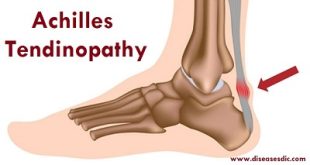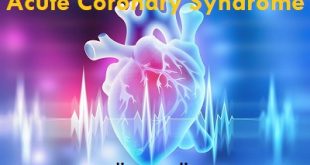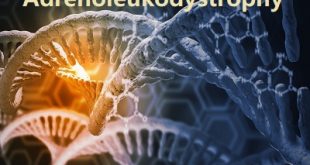What is ataxia-telangiectasia?
Ataxia telangiectasia (AT) is a complex genetic neurodegenerative disorder that may become apparent during infancy or early childhood. The disorder is characterized by progressively impaired coordination of voluntary movements (ataxia), the development of reddish lesions of the skin and mucous membranes due to permanent widening of groups of blood vessels (telangiectasia), and impaired functioning of the immune system (i.e., cellular and humoral immunodeficiency), resulting in increased susceptibility to upper and lower respiratory infections (sinopulmonary infections). Individuals with AT also have an increased risk of developing certain malignancies, particularly of the lymphatic system (lymphomas), the blood-forming organs (e.g., leukemia), and the brain.
In those with AT, progressive ataxia typically develops during infancy and may initially be characterized by abnormal swaying of the head and trunk. As the disease progresses, the condition leads to an inability to walk (ambulation) by late childhood or adolescence.
Pathophysiology
The ATM gene encodes the protein kinase ATM, which is the key regulator of cellular response to double-strand breaks (DSB) in DNA. Therefore, ataxia-telangiectasia symptoms include all the possible consequences of the perturbations in DNA damage response (DDR).
One basic defect associated with the malady is the abnormal sensitivity of ataxia-telangiectasia cells to x-rays and certain radiomimetic chemicals but not to ultraviolet irradiation, which leads to chromosome and chromatid breaks. Breakpoints are randomly distributed, but nonrandom chromosome rearrangements selectively affect chromosomes 7 and 14 at sites that are concerned with T-cell receptors and heavy-chain immunoglobulin coding and with the development of hematologic malignancies. Such disturbances could account for the frequency of infections and neoplasias.
As has been shown by Guerra-Maranhao et al, ataxia-telangiectasia patients are at high risk of having impaired responses to infection with pneumococci, which may be one of the causes of recurrent sinopulmonary infections in these patients. The authors analyzed the production of antibodies to polysaccharide antigens in patients with ataxia-telangiectasia and found that the levels of immunoglobulin G (IgG) antibodies to serotypes 1, 3, 5, 6B, 9V, and 14 of Streptococcus pneumoniae before and after immunization with 23-valent polysaccharide vaccine were significantly lower than in a healthy population.
Causes of ataxia telangiectasia
AT is caused by alterations (mutations) at specific areas within an individual’s genetic information. Each of us has a large amount of genetic information that is organized into smaller segments known as genes. Genes provide the necessary instructions that our cells need to perform different functions within our bodies.
AT develops when there are alterations in a specific gene known as ATM, located on chromosome 11 at position q22.3. The ATM gene has the ability to produce an enzyme called a “serine/threonine kinase” that has several important functions:
- It acts as a tumor suppressor — the enzyme keeps cells from growing and dividing too quickly and it promotes cell death.
- It interacts with other proteins when DNA damage occurs following exposure to ionizing radiation.
- The ATM enzyme coordinates DNA repair by activating other proteins that are essential for the repair process to occur.
It is believed that through a combination of these mechanisms, the ATM enzyme aids in the prevention of specific types of cancer, such as leukemia and lymphoma.
Patients with AT carry an alteration in both copies of the ATM gene in all the cells of their body. When both copies of the ATM gene are altered within the cells of an individual with AT, the altered gene copies will make less of the ATM protein or an ATM protein that does not function properly.
As a result, cells are hypersensitive to radiation and instead of repairing damaged DNA, the defective ATM proteins allow for alterations to accumulate in other genes because effective DNA repair is unable to occur. When this happens, individuals with AT are at an increased risk to develop leukemia and lymphoma. Additionally, altered ATM genes may allow cells to die inappropriately, particularly in the cerebellum. This can result in the neurological symptoms that occur in AT.
Risk Factors
Since A-T is an inherited genetic disease and symptoms often start in early childhood, lifestyle risk factors, or things you can change to lower your risk of developing a particular disease, aren’t applicable.
But having A-T raises the risk of developing cancer. Reducing lifestyle risk factors for cancer is even more important for people with the condition and their family members.
People with A-T have about a 40% risk of developing cancer, most likely leukemia or lymphoma. Those two cancers account for 85% of all cancers in people with A-T.1 People with A-T also have an increased risk of developing breast cancer, ovarian cancer, stomach cancer, skin cancer, and bone and soft tissue cancer.
The American Cancer Society says being a carrier of the ATM gene (inheriting one abnormal copy of the gene) has been linked to a high rate of breast cancer in some families. A 2021 review study identified a specific mutation or ATM variant associated with increased breast cancer risk called the V2424G mutation.
General risk factors for cancer include:
- Older age
- A personal or family history of cancer
- Using tobacco
- Obesity
- Alcohol
- Some types of viral infections, such as human papillomavirus (HPV)
- Specific chemicals
- Exposure to radiation, including ultraviolet radiation (UV) from the sun
Symptoms of ataxia telangiectasia
Symptoms include:
- Decreased coordination of movements (ataxia) in late childhood that can include ataxic gait (cerebellar ataxia), jerky gait, unsteadiness
- Decreasing mental development, slows or stops after age 10 to 12
- Delayed walking
- Discoloration of skin areas exposed to sunlight
- Discoloration of skin (coffee-with-milk-colored spots)
- Enlarged blood vessels in skin of nose, ears, and inside of the elbow and knee
- Enlarged blood vessels in the whites of the eyes
- Jerky or abnormal eye movements (nystagmus) late in the disease
- Premature graying of the hair
- Seizures
- Sensitivity to radiation, including x-rays
- Severe respiratory infections that keep coming back (recurring)
What are possible complications of ataxia telangiectasia?
Other problems that may occur with A-T include:
- Weakened immune system
- Increased risk for leukemia
- Increased risk for lymphoma
- Extreme sensitivity to radiation such as from X-rays
- Pulmonary disease, growth hormone deficiency, and diabetes
- Higher risk of leukemia and lymphoma
How is ataxia telangiectasia diagnosed?
A-T is suspected whenever a child develops signs of ataxia, meaning unsteady walking. Testing of the ATM gene is available, and genetic mutations can be identified in, about 90% of people with A-T. The following tests may be more helpful in determining if someone has A-T or another type of ataxia:
Immunoblotting (ATM protein testing). This is the best test to diagnose A-T. Nearly all individuals with A-T will have very low or no amounts of the protein made by the ATM gene.
Radiosensitivity assay. Since people with A-T have an increased sensitivity to radiation, removing some cells and treating the sample with radiation therapy can help make the diagnosis. It can take up to 3 months to get a result from this test.
ATM kinase activity. This test looks at the activity level of the protein made by the ATM gene. Little to no activity means that there is likely a mutation in the ATM gene.
How ataxia telangiectasia is treated?
Treatment for ataxia-telangiectasia (A-T) is geared toward preventing and managing symptoms. Common treatments include fighting respiratory infections and controlling the spread of and severity of dilated blood vessels.
Home Remedies and Lifestyle
A person with A-T should stay out of the sun, as direct sunlight causes worsening of the widened and dilated blood vessels in exposed areas (telangiectasia).
Nutritional therapies are being looked at for their potential in reducing symptoms associated with A-T including nutritional deficiencies and immune system dysfunction.
A particular nutritional supplement, myo-inositol (also called inositol), has been looked at with respect to its impact on blood sugar management and insulin sensitivity. Inositol is currently used in treating metabolic disorders like diabetes.
Diabetes is a common co-occurring disorder in people with A-T. Inositol may be useful for reestablishing balance in people with A-T who have type 2 diabetes or insulin-resistant diabetes.
Postural Drainage
Respiratory infections can make it even more challenging to clear the airways. Postural drainage is an at-home remedy that can help.
Postural drainage is when you put your head at a lower level than the rest of our body so your bronchial tubes and lungs can drain. You can do this by lying on your back, bending your knees, placing a pillow under your knees, and resting there until you feel relief.
Vitamin E Therapy
Vitamin E is an antioxidant that’s said to protect cells against free radical damage caused by things like environmental toxins, smoke, and pollution. In A-T, a person’s cells are under increased oxidative stress. For people with A-T, vitamin E may be used to provide temporary relief of symptoms.
Prescriptions
Prescriptions for A-T vary widely depending on the symptoms being treated. Prescriptions for A-T are used off-label, meaning there is no approved medication for A-T treatment.
Off-label prescriptions include certain anti-Parkinson’s and anti-epileptic drugs. Research on their usefulness in treating symptoms is limited due to small sample sizes.
Amantadine sulfate is one example. It may help in the treatment of motor symptoms (movement issues) in A-T. One study on 17 children treated with amantadine sulfate found that over 76% of patients had at least 20% symptom improvement after eight weeks.7
Other examples include:
- Baclofen for ataxia-related muscle spasms or cramps
- Clonazepam or Neurontin (gabapentin) and Lyrica (pregabalin) for dizziness and vertigo, tremors, and rest tremors
- Prozac (fluoxetine) for speech and swallowing, and for uncontrolled laughing and crying
Metformin
Metformin lowers blood sugar levels (acting as an anti-hyperglycemic agent). It’s recommended as first-line therapy for type 2 diabetes, which can be a complication associated with living with A-T.
Valium: Valium (diazepam) can be used to help symptoms of slurred speech and involuntary muscle contractions.
Antibiotics: Antibiotics can be used to treat the respiratory infections common in persons with A-T.
Immune-Heightening Medications
Researchers are working in clinical trials to investigate how the following immune-heightening medications may help treat immune-related problems associated with A-T. To date, none have been approved in the treatment of A-T or A-T-specific symptoms.
Examples include:
- Levamisole: This experimental cancer drug was pulled from the U.S. market in 2000 due to adverse side effects.
- Interleukin-2: This drug regulates white blood cell activity involved in immune response.
- Intron (interferon): This drug interferes with your immune system environment in such a way that it signals antiviral activity. It is FDA approved for treating certain cancers and hepatitis B.
- Chemotherapeutic agents (e.g., cyclophosphamide): These suppress your immune system.
- Antilirium (physostigmine): This drug works on the nervous system to alter signals between nerves and muscles.
Surgeries and Specialist-Driven Procedures
A-T can cause difficulties in drinking, chewing, and swallowing, and tremors can make holding utensils and eating particularly challenging. Treatments for such problems should be advised by a speech-language pathologist.
Dietitians can also help with specific changes like increasing calories and discussing the benefits and drawbacks of certain food supplements.
Gastronomy Tube
To prevent nutritional deficiencies and aspiration, a gastronomy tube (G-tube) can be inserted through the abdomen skin and into the stomach. With early placement, nutritional supplementation allows growth, improves stamina, and decreases the risk of lung damage from aspiration.6
G-tubes are recommended in the following situations:
- A child cannot eat enough to grow.
- A person of any age cannot eat enough to maintain weight.
- Aspiration is problematic.
- Mealtimes are stressful or too long, interfering with other activities.
Physical and Occupational Therapy
Physical therapy can be used to help with muscle strength and prevent tightening and shortening in the limbs.
Physical therapy, as well as speech therapy and occupational therapy, can be useful in maintaining certain functions, but cannot prevent their eventual progressive decline
Neurological deterioration eventually leads to needing to use a wheelchair and other adaptive devices. Children and teens may need adaptive equipment to attend school.
Genetic Counseling
Genetic counseling has been said to potentially be of benefit to people with A-T and their families. It can provide education for the patient and family members regarding the possibility and potential consequences of genetic testing for A-T relatives, including siblings. Genetic counseling may also be useful for families seeking support in interpreting results.
How can prevent ataxia telangiectasia?
Since ataxia telangiectasia is the result of a genetic mutation, there is no way to prevent it from occurring. You can take steps to reduce your risk of having a child with a genetic condition by avoiding smoking and avoiding exposure to chemicals. If you plan on becoming pregnant, talk with your healthcare provider about genetic testing to understand your risk of having a child with a genetic condition like ataxia-telangiectasia.
 Diseases Treatments Dictionary This is complete solution to read all diseases treatments Which covers Prevention, Causes, Symptoms, Medical Terms, Drugs, Prescription, Natural Remedies with cures and Treatments. Most of the common diseases were listed in names, split with categories.
Diseases Treatments Dictionary This is complete solution to read all diseases treatments Which covers Prevention, Causes, Symptoms, Medical Terms, Drugs, Prescription, Natural Remedies with cures and Treatments. Most of the common diseases were listed in names, split with categories.







